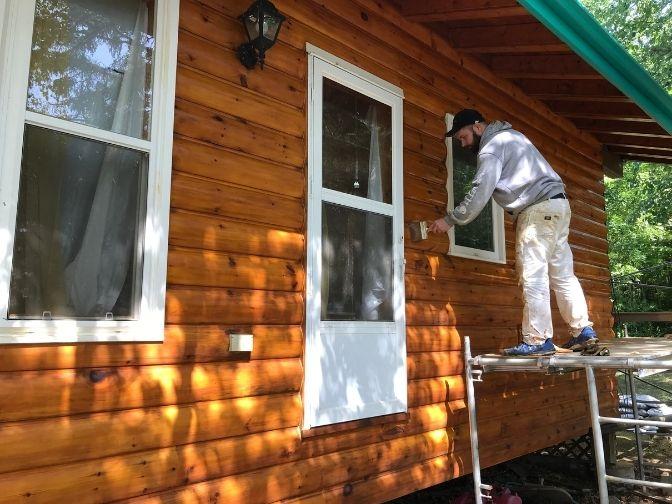12 Apr Staining vs. Painting: What’s The Difference?

In front of you is a wood dining table. It’s seen better days. Now, you’re facing the same question that countless painters have asked themselves: Should you try staining it or painting it?
You can see the difference between painting and staining; one coats the surface completely, while the other lets textures show through. But which one should you choose? We’re going to explain the differences between them so you pick the right one for your next project:
Staining
This colourant is used to alter the colour and tone of the wood. Stain is:
Thinner than paint
Stain is mostly used on wood products; it enhances the natural beauty of wood without covering up its unique qualities. Create a natural look using stain.
If you want to mask a few surface imperfections, you can select a darker stain with more pigmentation; it will allow most of the wood grain to show through while disguising major flaws.
More affordable
On average, buying stain is less expensive than paint. Of course, this number varies depending on the brand you choose, but it’s safe to say that staining wood is typically cheaper than painting it.
Less prep work
Before you paint, you need to spend time preparing the surface. You must repair imperfections, sand the surface, and apply primer to help the paint stick. Stain is much easier to get started with; no primer is required.
Painting
Paint: The tried-and-true product for any home makeover. Here’s why paint is chosen for countless refinishing and remodeling projects:
More opaque (but it requires several coats)
If you want to cover up a material (either because you don’t like the underlying colour or there are surface imperfections), paint is the way to go. Since it’s completely opaque, you can give the material a whole new look.
A variety of finishes
Matte? High-gloss? Or satin? You can choose a variety of finishes when you’re selecting paint. Stain, on the other hand, only comes in a flat sheen.
Low maintenance
A perk of paint’s opaqueness is that it’s more durable and easy to clean. When you use high-quality paint, you’ll find that it’s resistant to cracks and chips.
Which One Should You Choose?
You can paint over stained wood, but you can’t apply stain over paint. Stain isn’t opaque enough to cover paint; if you try to stain a painted surface, it won’t work.
To help you decide, start by asking these questions:
- What material are you using? Preserve the beauty of wood with stain. If the material has seen better days, use paint instead.
- Have you already primed the surface? To help the paint adhere to the material, it’s best to start by applying primer to it.
- Do you want a subtle change or a drastic transformation? Use stain to give a wood material a gorgeous new tone. But to start fresh, coat it with paint to create a completely new look.
Get Our Professional Advice!
Need a Winnipeg painter to help you out? At Pinnacle Painting, we’re always here to lend a hand. We offer residential and commercial painting services across the city.
Whether you need to use paint or stain, we have the training and experience to get the job done. Book an estimate today!
